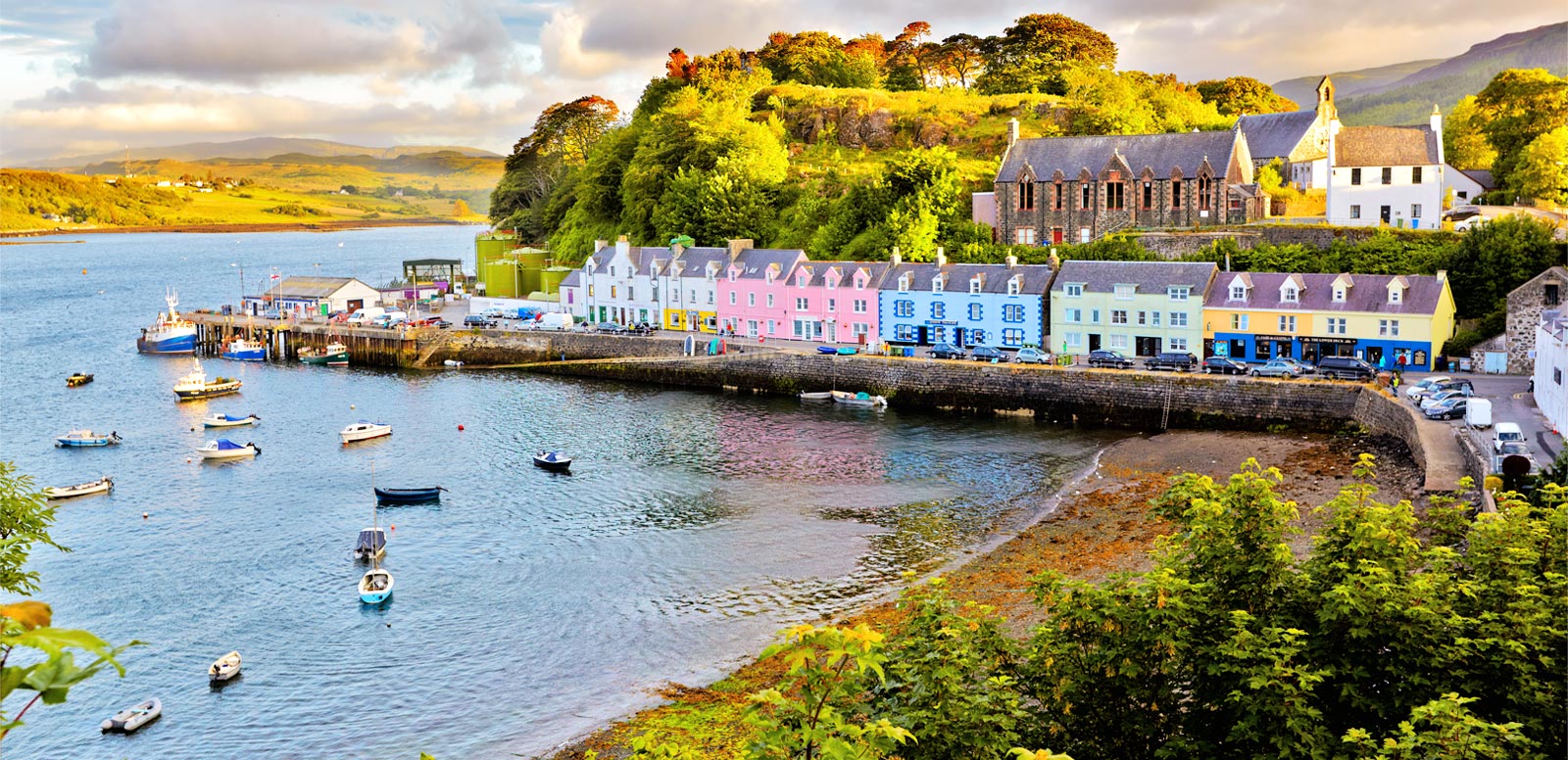Scotland has many treasures crammed into its compact territory – big skies, lonely landscapes, spectacular wildlife, superb seafood and hospitable, down-to-earth people.Scotland harbours some of the largest areas of wilderness left in Western Europe, a wildlife haven where you can see golden eagles soar above the lochs and mountains of the northern Highlands
Things to know before visit Scotland
In Scotland the weather is generally cool and wet. The warmest months are June, July and August with temperatures touching 15°C. March, April and May witness Spring with comfortable temperatures- ranging between 7°C to 13 °C. The main winter months are December, January and February with temperatures dipping to about 5°C. The peaks of the Highlands get snowfall too.
The capital city of Scotland since 15th century, Edinburgh has a lot to do and offer. Located on top of extinct volcanoes and overlooking the sea, this city gives the look and feel of Old Scotland with charming cobbled stone streets, the medieval Old Town and beautiful Georgian architecture. From visiting historical sites like the famous castle and Holyrood Palace, framing the Royal Mile in the Old town to attending the festivals in the town including the Fringe, the world’s largest international arts festival, Edinburgh is a great place to begin your Scottish journey.
Ancient town of Scotland, Glasgow dates back to pre historic era. Started as a port city on the River Clyde in the country's western Lowlands, it is popular for Victorian and art Nouveau architecture that showcases the city’s prosperity in the 18th-20th century. Today, the city is a cultural center with institutions like Scottish Ballet and National Theatre of Scotland, Scottish Opera and renowned museums and galleries. A must see in the city are the the Glasgow Cathedral and the old Antonine Wall.
A sprawling, deep, freshwater loch in the Highlands that extends from Loch Dochfour to Fort Augustus. It is a 37 kilometer long loch with monster stories surrounding it. Most visitors come to the lake to see the most elusive and beloved monster, Nessie, the lady of the lake. You can spend time visiting quaint villages around the lake or stroll along the lake and soak in the natural beauty in its most pristine form.
An archipelago off Scotland’s west coast, Hebrides is known for Scottish Gaelic literature. In this place, George Orwell wrote 1984. With more than 50 island making up the Inner and Outer Hebrides, you will be spoilt for choice in terms of beaches to frolic around.Great place to go on hikes and to watch wildlife, Hebrides is meant for outdoor enthusiasts. With at least 200 species of birds and plenty of wildlife, this place is a haven for nature lovers. Some of the popular islands here include; Jura, Mull, Raasay, Isle of Skye and Iona.
One of the best valleys in Scotland, Glencoe is a picture postcard destination with green pastures, overcast skies and flowers blooming in the wild. Nestled amongst hills and the pyramid-like Buachaille Etive Mor, this beautiful U-shaped valley is a haven for hikers and rock climbers. It is also a popular ski destination. While traversing through the valley definitely stop by the the monument commemorating the 1692 Massacre when the Argylls attacked the MacDonalds and the Glencoe Folk Museum showcasing local heritage.
Travel Advisory:For the latest information and advice on safety and entry requirements please consult your travel agent well in advance of your departure and visit the following government website:
Department of Foreign affairs and trade www.dfat.gov.au
Smart Traveler website www.smartraveler.gov.au
Electricity: While traveling to Scotland it is advisable to carry an international power plug adapter with multiple plug configurations. The standard voltage is at 220- 240V. The standard sockets are three-pronged ones.

